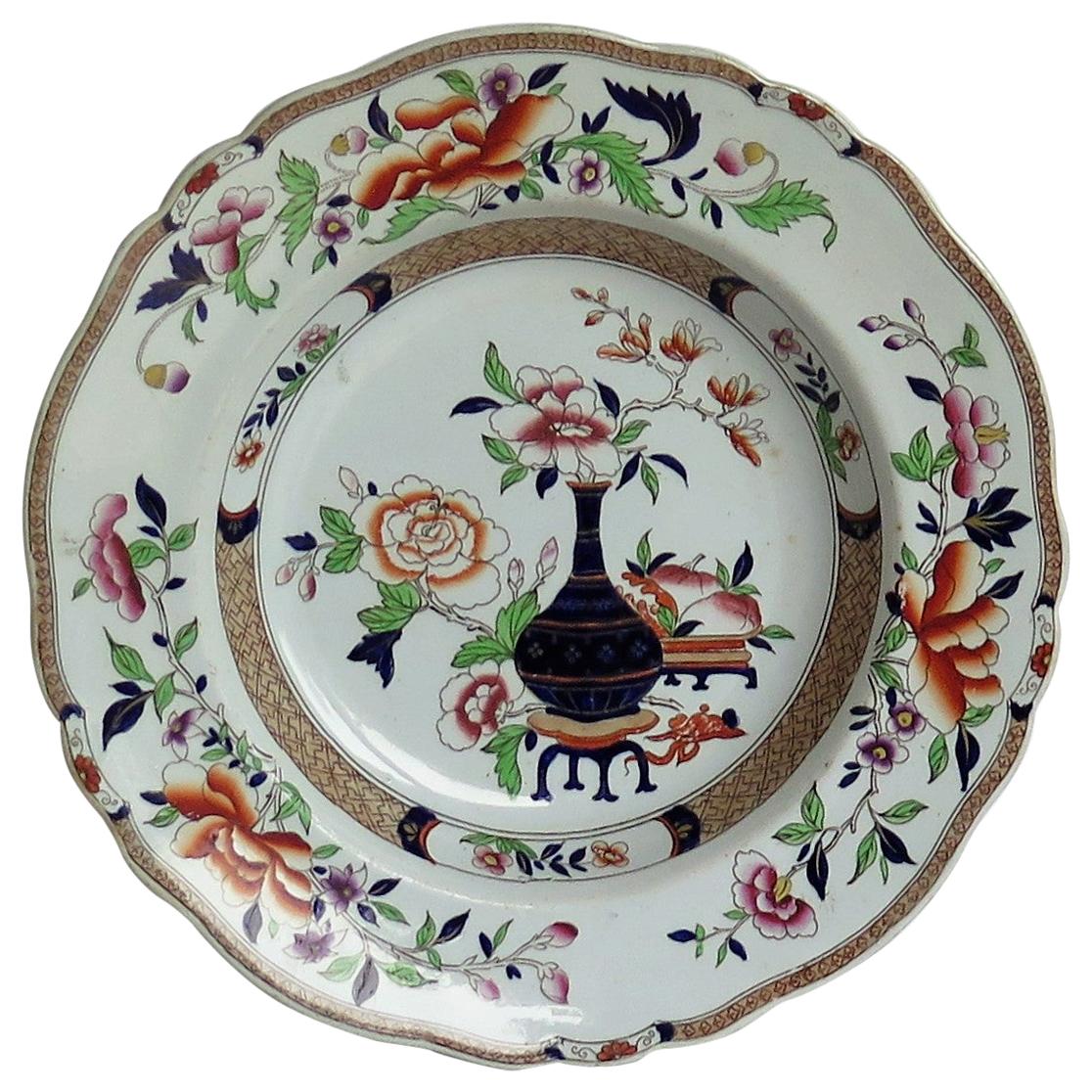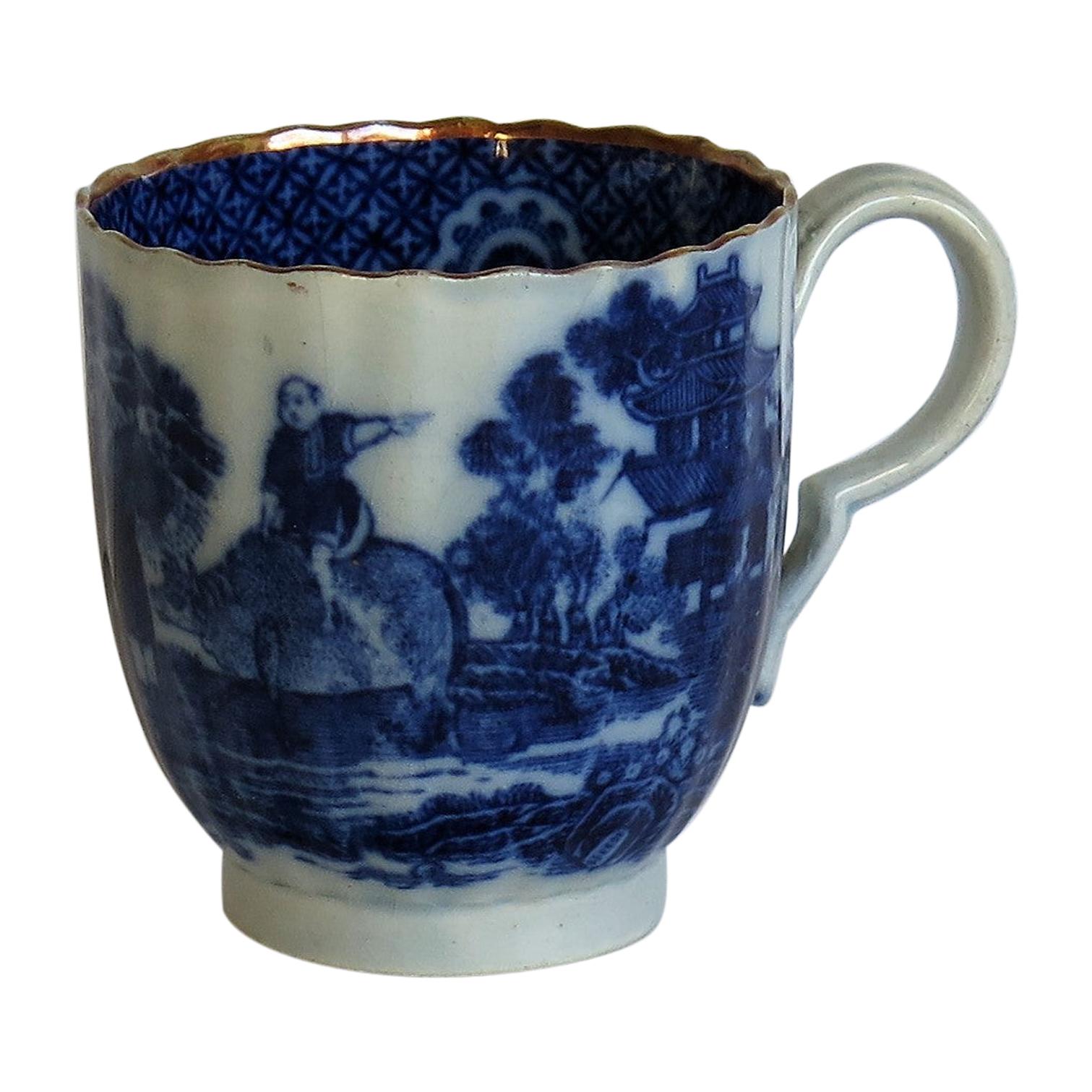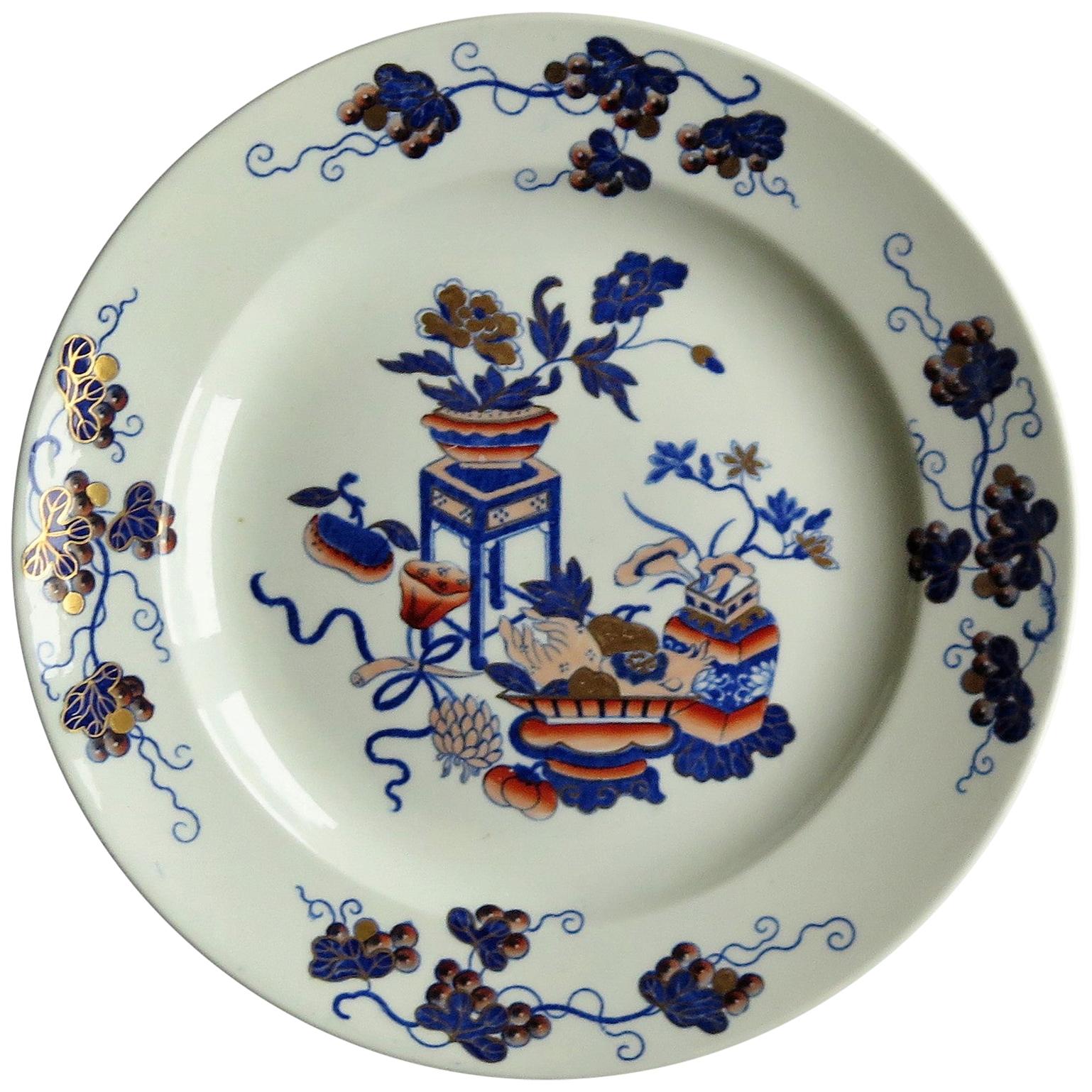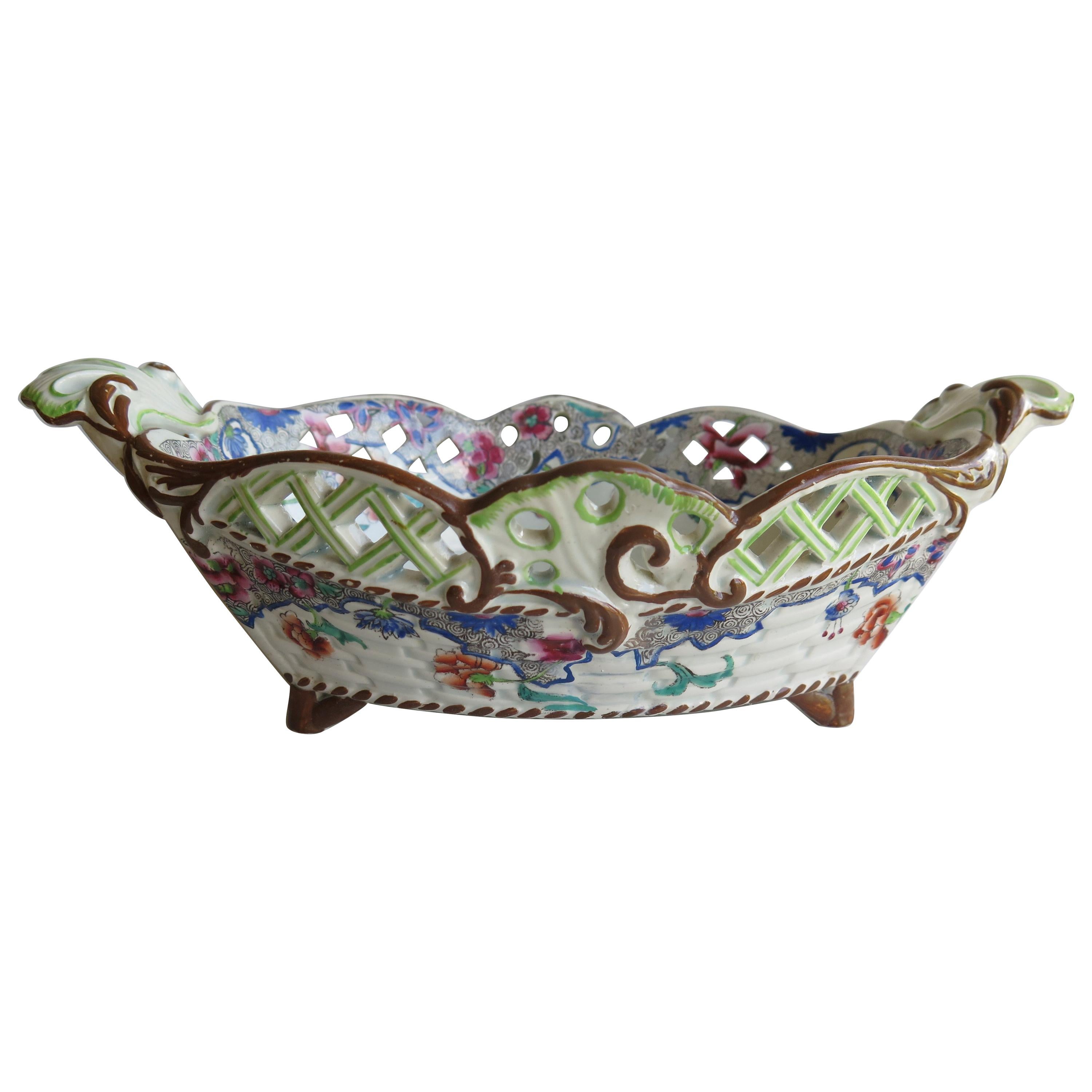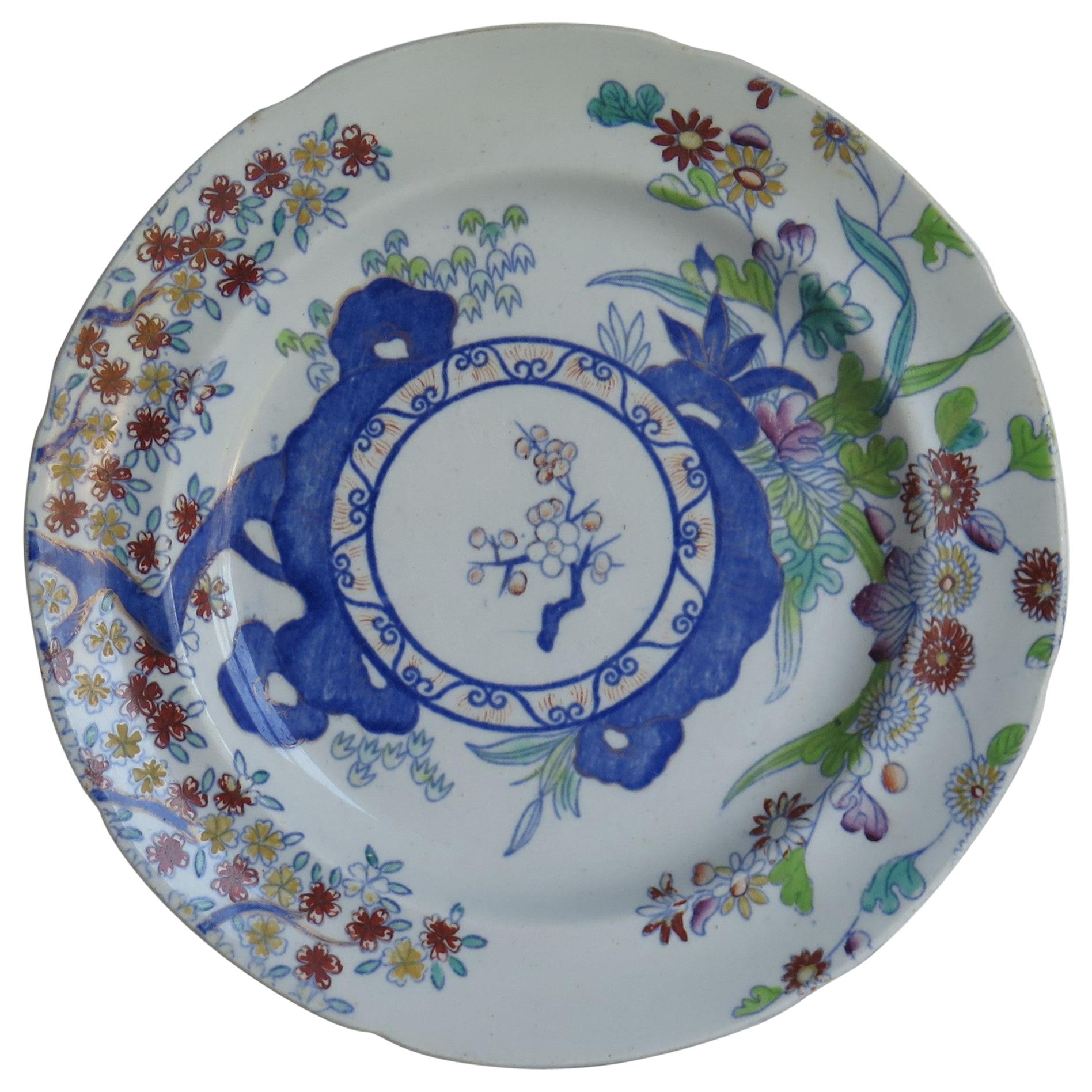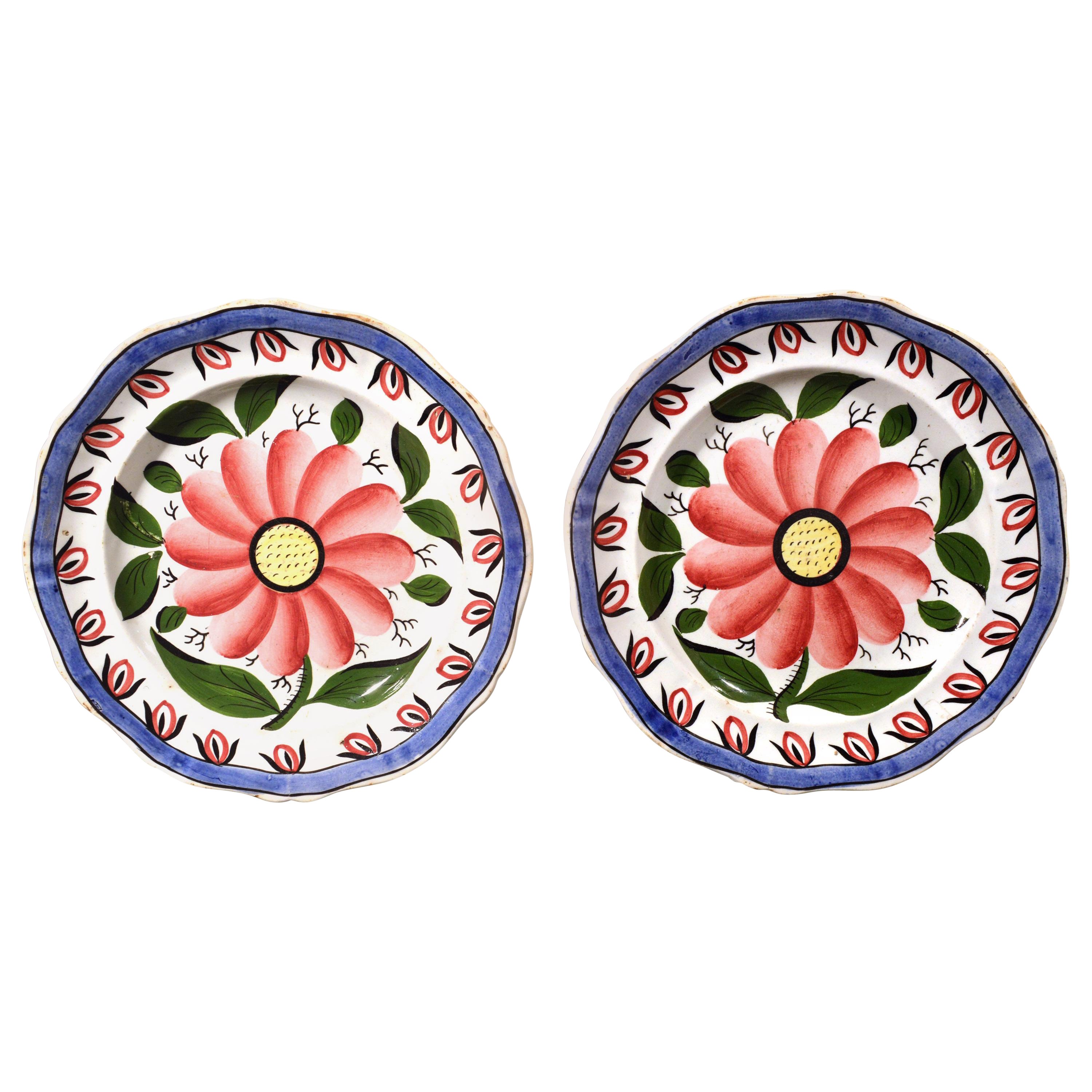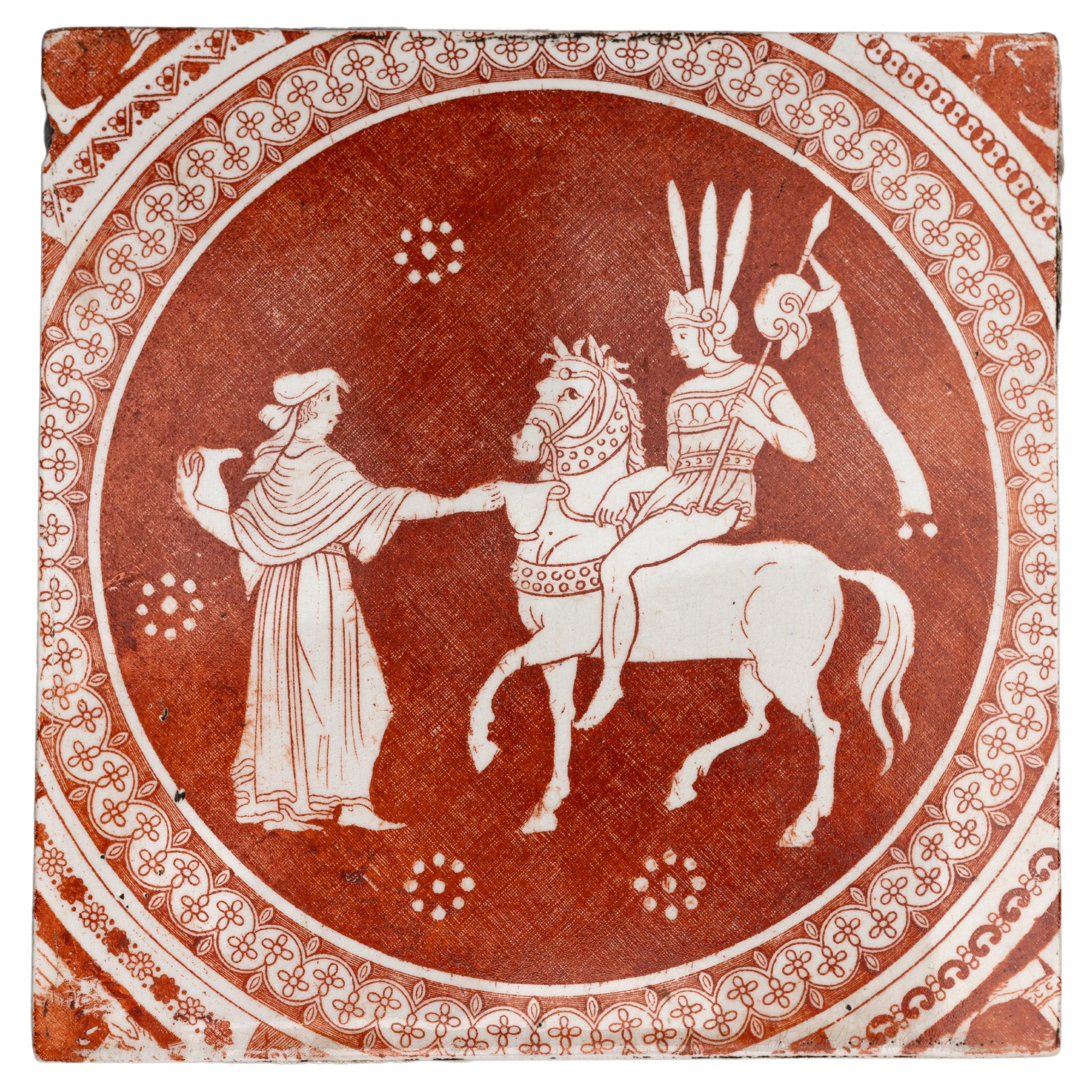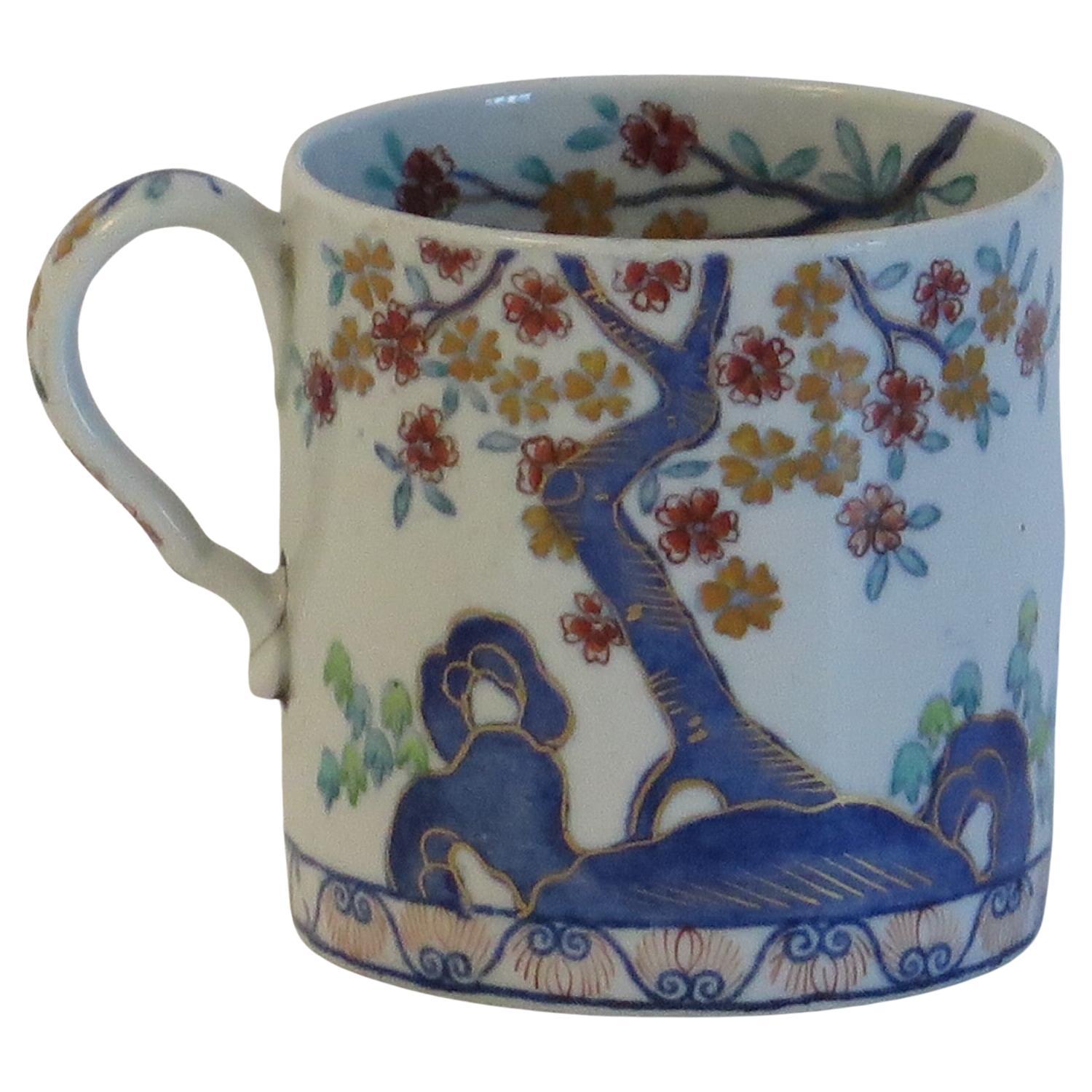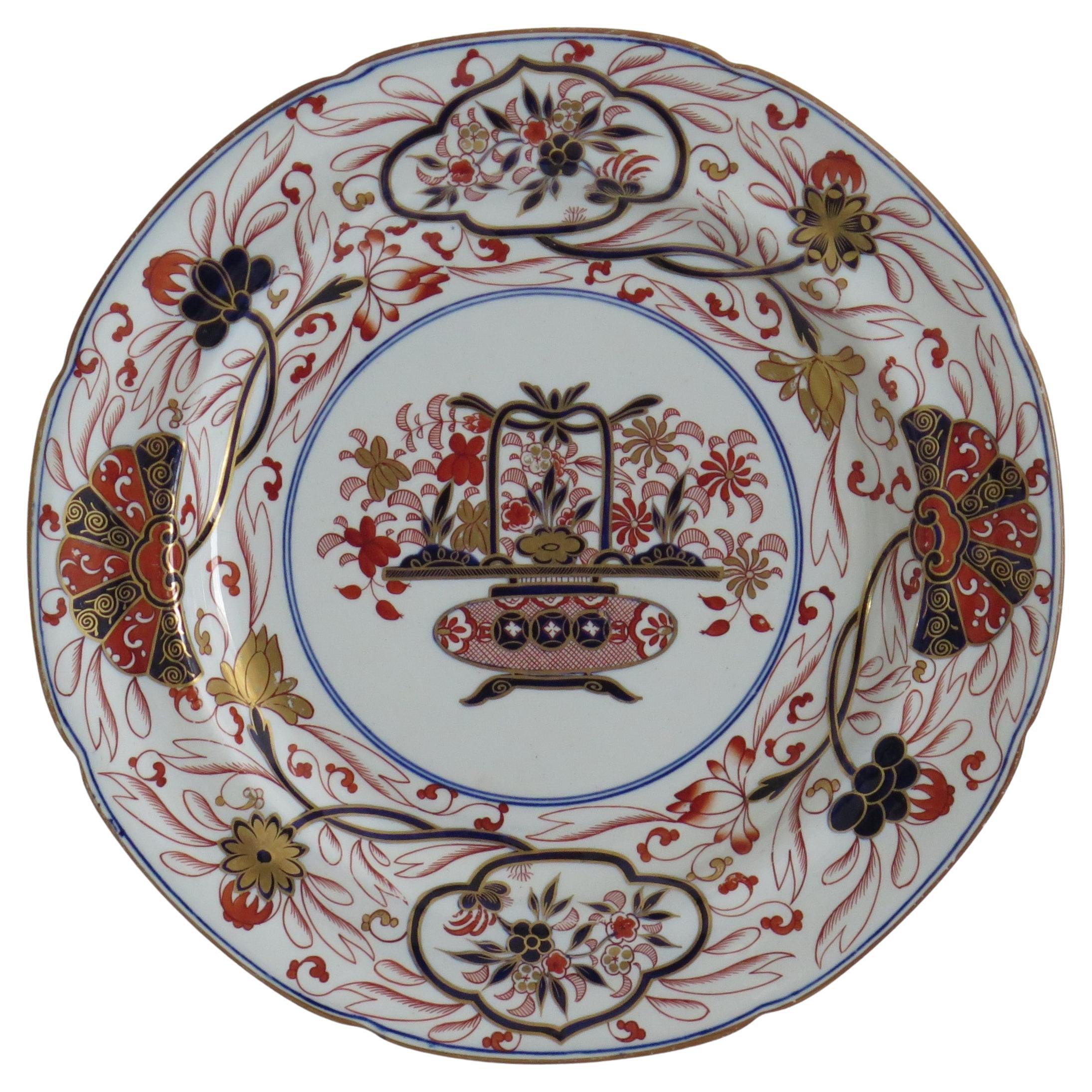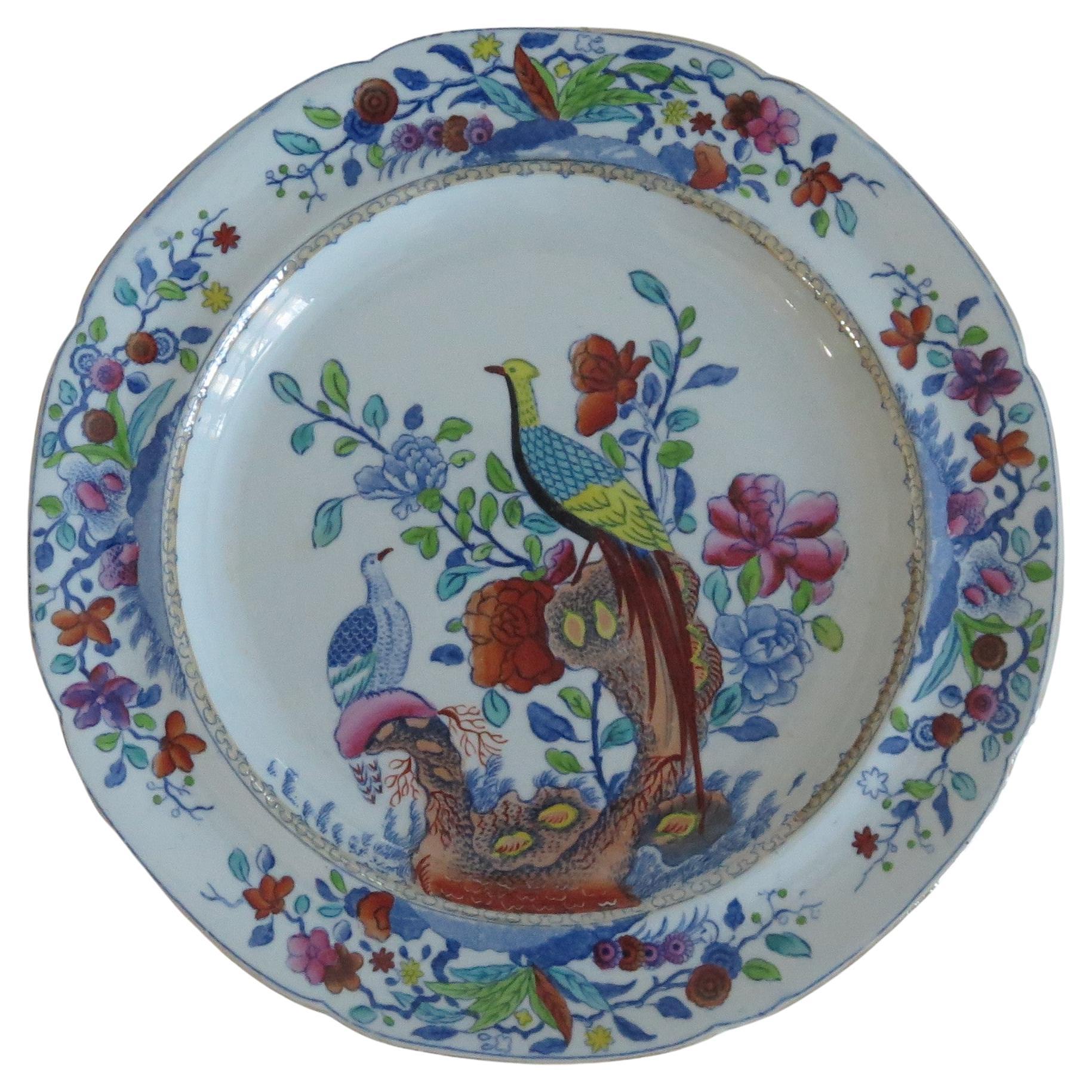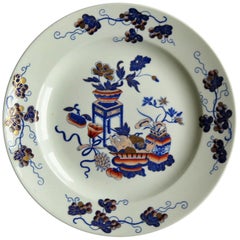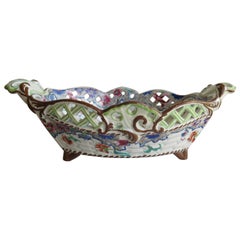
Fine Early Spode Pearlware Plate Blue and White Pagoda Pattern, circa 1805
View Similar Items
Want more images or videos?
Request additional images or videos from the seller
1 of 20
Fine Early Spode Pearlware Plate Blue and White Pagoda Pattern, circa 1805
About the Item
- Creator:Josiah Spode (Manufacturer)
- Dimensions:Height: 0.8 in (2.04 cm)Diameter: 8.25 in (20.96 cm)
- Style:Chinoiserie (Of the Period)
- Materials and Techniques:Pearlware,Glazed
- Place of Origin:
- Period:
- Date of Manufacture:circa 1805
- Condition:Wear consistent with age and use. Very Good Antique Condition. Little sign of any use. NO Cracks, NO Chips, NO Restoration PLEASE NOTE: Sorry there are some bright yellow/white reflections on some of the images.
- Seller Location:Lincoln, GB
- Reference Number:Seller: P 13821stDibs: LU990317644832
About the Seller
5.0
Platinum Seller
These expertly vetted sellers are 1stDibs' most experienced sellers and are rated highest by our customers.
Established in 1993
1stDibs seller since 2013
1,255 sales on 1stDibs
Associations
LAPADA - The Association of Arts & Antiques Dealers
More From This SellerView All
- Early Coffee Cup Blue and White Boy on a Buffalo Ptn probably Spode, circa 1790By Josiah SpodeLocated in Lincoln, LincolnshireThis is a good, very early, rare blue and white coffee cup in the "Boy on a Buffalo" pattern, probably from the factory of Josiah Spode, stoke on Trent, Staffordshire, England, made...Category
Antique Late 18th Century English Chinoiserie Ceramics
MaterialsEarthenware
- Georgian Plate by Spode in Gilded Bow Pot Pattern Number 2954, circa 1820By Josiah SpodeLocated in Lincoln, LincolnshireThis is a beautiful plate in the Bow Pot pattern, produced by the Spode factory and made of a type of earthenware pottery called Pearl-ware, in the early 19th century, circa 1820. ...Category
Antique Early 19th Century English Chinoiserie Pottery
MaterialsPearlware
- Early Spode Creamware Pierced Chestnut Basket English circa 1825By Josiah SpodeLocated in Lincoln, LincolnshireThis is a rare Creamware pottery Chestnut Basket made by the SPODE factory, Stoke on Trent, Staffordshire, England, in the late Georgian, Regency period...Category
Antique Early 19th Century English Georgian Ceramics
MaterialsCreamware
- Plate by Copeland Late Spode in Japanese Kakiemon Pattern No. 2117, circa 1850By Copeland SpodeLocated in Lincoln, LincolnshireThis is a beautiful plate in the Japanese inspired Kakiemon pattern number 2117, produced by the Copeland - Late Spode factory and made of earthenware potte...Category
Antique Mid-19th Century English Chinoiserie Pottery
MaterialsPottery
$203 Sale Price33% Off - Early John Ridgway Soup Plate Aukland Chinoiserie Pattern, English, circa 1835By John RidgwaysLocated in Lincoln, LincolnshireThis is a very decorative, Imperial Stone China (ironstone), large deep plate or soup bowl by John Ridgway, dating to the William IV period of the...Category
Antique 19th Century English Chinoiserie Ceramics
MaterialsIronstone
- Georgian Spode Coffee Can Ironstone Kackiemon Pattern 2117, circa 1820By SpodeLocated in Lincoln, LincolnshireThis is a good stone China (Ironstone) coffee can made by the SPODE factory in the early 19th Century, circa 1820. The coffee can is well potted with cylindrical shape and a loop handle with the distinctive Spode kink to it. The piece is beautifully decorated with hand painted enamels in the chinoiserie Kakiemon style, pattern number 2117. It has the Spode Stone China blue printed...Category
Antique Early 19th Century English Georgian Ceramics
MaterialsIronstone
You May Also Like
- English Pottery Pearlware Botanical Plates, circa 1840Located in Downingtown, PAEnglish pottery pearlware botanical plates, circa 1840 The folky painted plates have a scalloped rim. In the center of each plate is a large...Category
Antique Early 19th Century English Folk Art Pottery
MaterialsPearlware, Pottery
- Early Spode Red Greek Pattern TileBy Josiah Spode, SpodeLocated in Fort Lauderdale, FLA Neoclassical red transferware tile made by Spode 1806-1810, with the ‘Refreshments for Phliasian Horseman’ pattern. Sir William Hamilton’s Collection of Etruscan, Greek and Roman antiquities, first published in 1766 by Pierre d’Hancarville, was a landmark publication in English design. It intended to disseminate the Antique style through its engravings of Attic pottery. The catalog’s faithful reproductions of Classical vases led British potteries, including Spode, to adapt or even copy the ancient art for modern life. These Spode Greek pattern tiles reflect the major influence of Hamilton’s catalog on English Neoclassicism. The central scene was taken directly from the catalog. This tile can be dated to a narrow window of production in the Spode factory, 1806-1810. During that time, Spode used a technique known as the “Pluck and Dust” method to print in red transfer designs onto creamware. Using this method, source prints were transferred overglaze using tissue imprinted with a very faint rendition of the design outlined in sticky oil. The decorator applied the tissue to the object then carefully “plucked” or pulled it away, leaving the sticky oil design behind. Then, a finely-ground enamel color was “dusted” onto the surface, sticking to any areas that had the oil. A final firing at a low temperature in the enamel kiln made the pattern permanent. The Pluck and Dust technique improved upon bat-printing and enabled larger designers to be transferred. It was short-lived, however, as under-glaze transfer printing soon took over as the preferred method for producing transferwares. Dimensions: 5 in. x 5 in. x 1/4 in. Condition: Excellent. Slight chip to the upper left corner measuring approximately 0.9 cm. in length. Provenance: The Collection of Nancy and Andrew Ramage Jonathan Horne...Category
Antique Early 19th Century English Neoclassical Pottery
MaterialsEarthenware, Creamware
- Early 19th Century Pearlware Chestnut BasketLocated in Pasadena, CAThis is a good example of a very early 19th century Pearlware Chestnut Basket in the "Blue Willow" transfer pattern. Creamware was invented during the second half of the 18th century and reached its height of popularity c.1810. Chestnut baskets were common serving pieces in 18th and 19th century households. Period antique Chestnut basket...Category
Antique Early 19th Century English Regency Ceramics
MaterialsClay
- Early 19th Century Spode Red Greek Pattern TileBy Spode, Josiah SpodeLocated in Fort Lauderdale, FLA Neoclassical red transferware tile made by Spode 1806-1810, with the ‘Zeus in His Chariot’ pattern. Sir William Hamilton’s Collection of Etruscan, Greek and Roman antiquities, first published in 1766 by Pierre d’Hancarville, was a landmark publication in English design. It intended to disseminate the Antique style through its engravings of Attic pottery. The catalog’s faithful reproductions of Classical vases led British potteries, including Spode, to adapt or even copy the ancient art for modern life. These Spode Greek pattern tiles reflect the major influence of Hamilton’s catalog on English Neoclassicism. The central scene was taken directly from the catalog. This tile can be dated to a narrow window of production in the Spode factory, 1806-1810. During that time, Spode used a technique known as the “Pluck and Dust” method to print in red transfer designs onto creamware. Using this method, source prints were transferred overglaze using tissue imprinted with a very faint rendition of the design outlined in sticky oil. The decorator applied the tissue to the object then carefully “plucked” or pulled it away, leaving the sticky oil design behind. Then, a finely-ground enamel color was “dusted” onto the surface, sticking to any areas that had the oil. A final firing at a low temperature in the enamel kiln made the pattern permanent. The Pluck and Dust technique improved upon bat-printing and enabled larger designers to be transferred. It was short-lived, however, as under-glaze transfer printing soon took over as the preferred method for producing transferwares. Dimensions: 5 in. x 5 in. x 1/4 in. Condition: Excellent. Provenance: The Collection of Nancy and Andrew Ramage Jonathan Horne...Category
Antique Early 19th Century English Neoclassical Pottery
MaterialsEarthenware, Creamware
- English Blue and White Brown-Westhead, Moore & Co. Valletta Pattern WashbasinBy Brown Westhead MooreLocated in Atlanta, GAAn English blue and white Brown-Westhead, Moore & Co., Valletta pattern washbasin from the late 19th century, featuring a pitcher and its basin. Created by the English manufacturer B...Category
Antique Late 19th Century English Pottery
MaterialsCeramic, Earthenware, Pottery
- Blue and white Swansea Willow pattern plateBy DillwynLocated in East Geelong, VICThis blue and white Swansea earthenware plate is decorated with their transfer printed standard Willow pattern. It is in very good condition, but does h...Category
Antique 1810s English Chinoiserie Pottery
MaterialsEarthenware
Recently Viewed
View AllMore Ways To Browse
Pearlware Blue And White
Spode Pearlware
Blue And White Transfer Ware
Spode Transfer Ware
Chinese Ironstone
Ironstone Chinese
Antique Hatch
Antique Majolica Plate
Antique Green Majolica
18th Century Chinese Rose Porcelain
Yellow And Green Majolica
Blue Porcelain Charger
Modern Painted Ceramic Plate
China Club
Antique Russian Plate
Antique Russian Plates
White Spanish Ceramics
Turquoise Majolica
